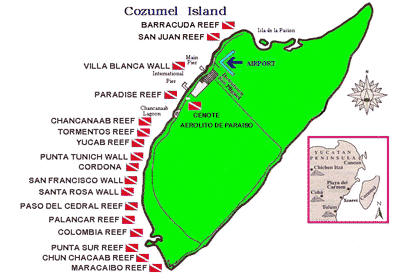You can still get walls in a channel. I was just curious.
Thx,
J
I don't see any need for apologies; many divers on SB don't know much about Cozumel, and too I had no idea where
Erewhon was - and still don't know what you mean by that, but anyway.
As many times as I've been to Cozumel, I'd never been up to the northern sites; got that on the list for my next trip -
depending on the weather. The first post gave some location info but I'll add some general info that may help even tho I have not dived the sites.
Cozumel is indeed on a channel separating it from the Yucatan peninsula of Mexico, where Cancun is located...
With the site mentioned being on the north end of the channel nearly...
The general current in the Cozumel channel is from south to north as the North Atlantic Gyre passes by it on both sides...
With many exceptions! Shore eddies often push divers the other direction, or even change during a dive, and conflicting currents on a wall can create up and down currents. I've been pulled off the top of a wall that was planned as a shallow reef dive, wondering what the hell I was doing at 100 ft deep alone and my pony bottle back on the boat. :silly:
Is there any predictability on that current at all? For example, is there a point in the tidal cycle at which it is most powerful?
It's not like the tidal currents of the San Juan islands (similar name, different place) in Puget sound. There are some oceanic phenomena following a full moon (the name escapes me) but I suspect what happens at the north end of this channel probly varies a lot with how the Gyre comes back together.
Hope that helped some...?







